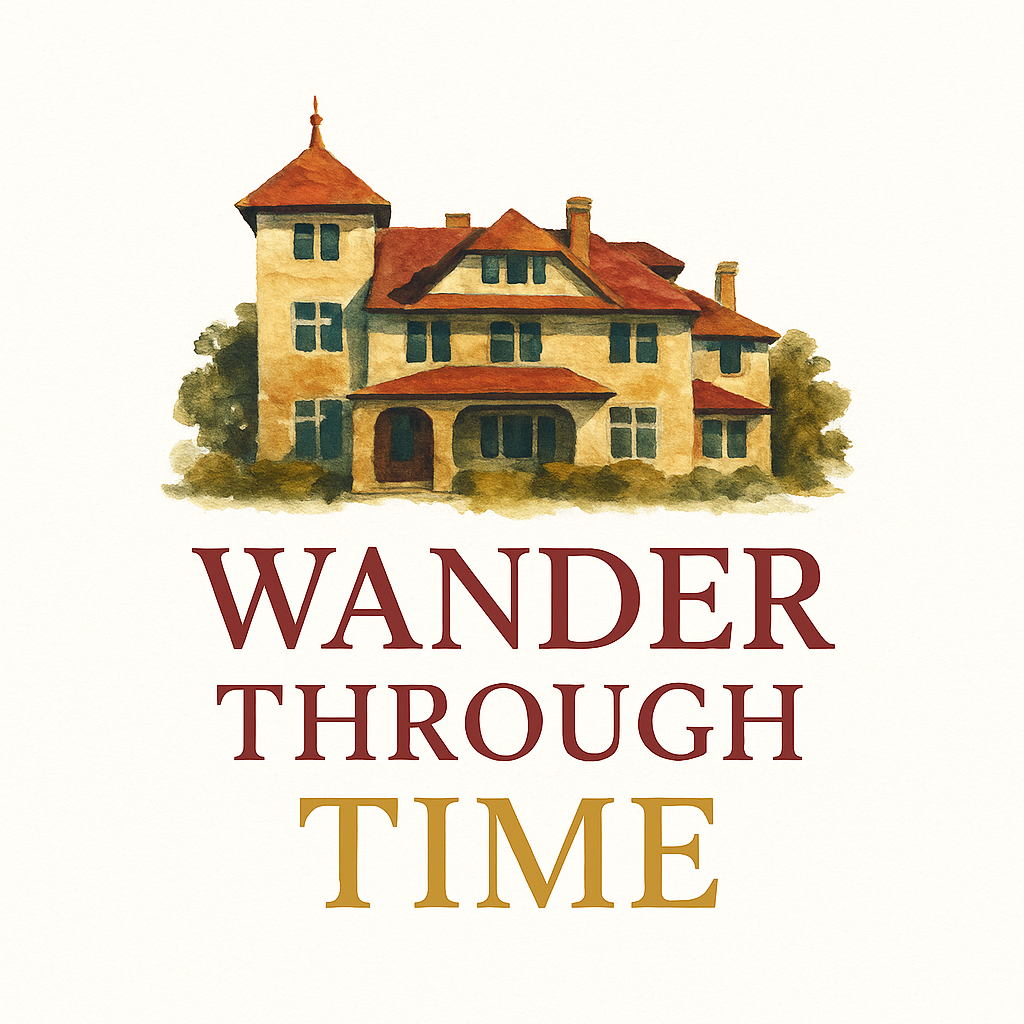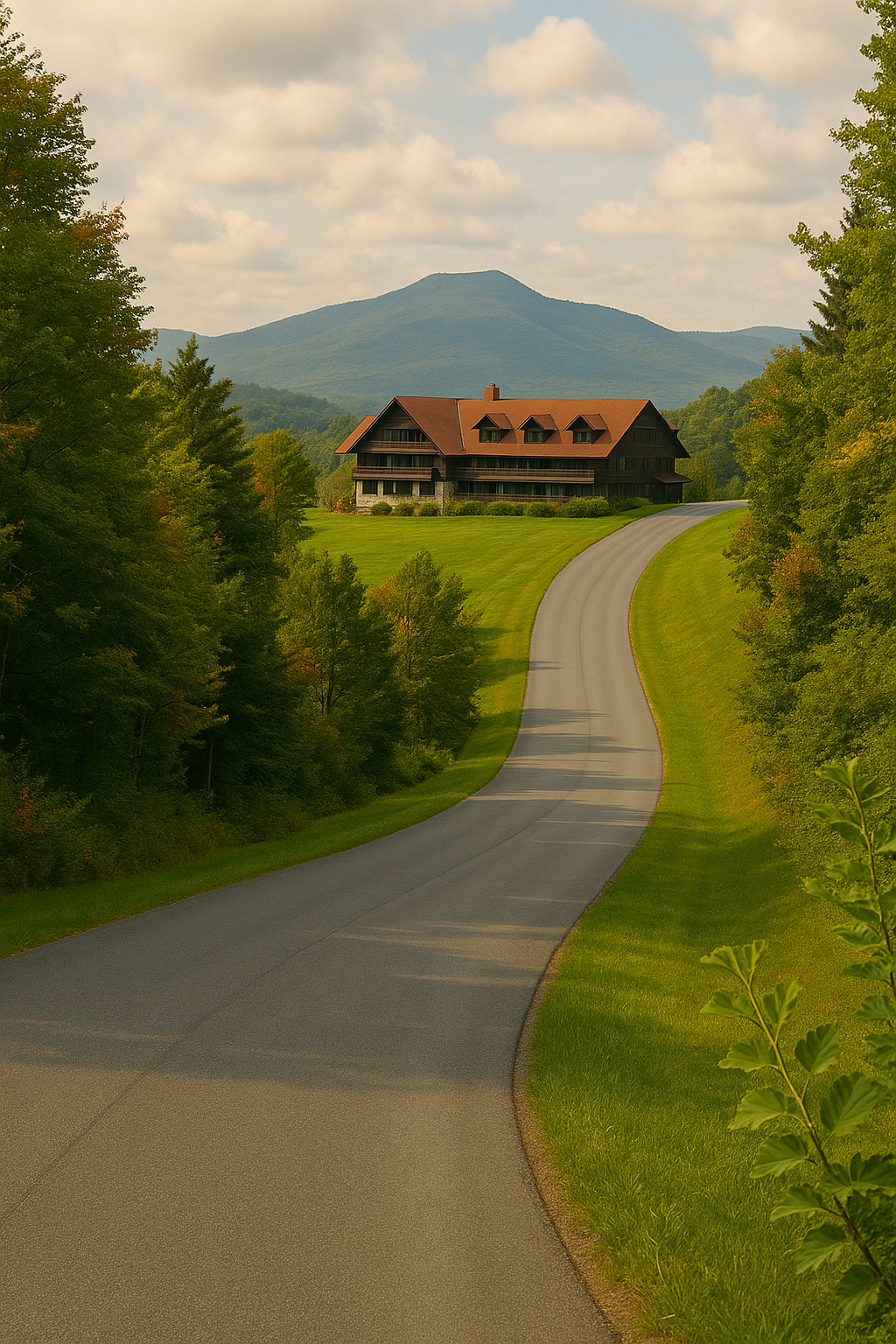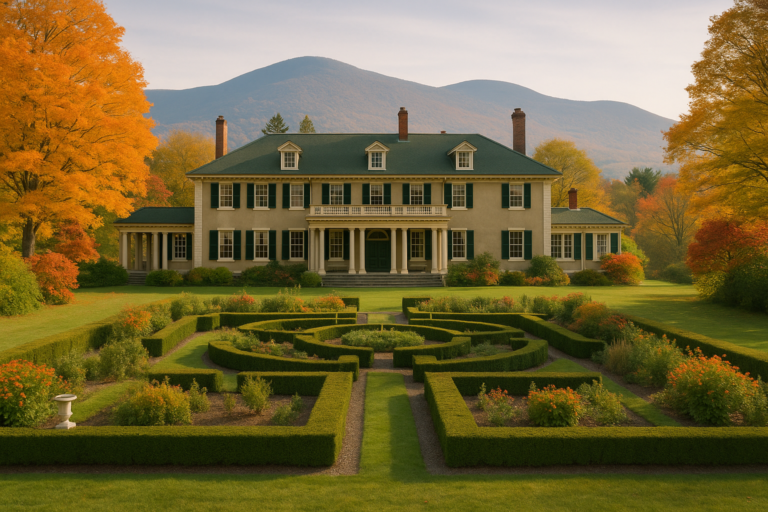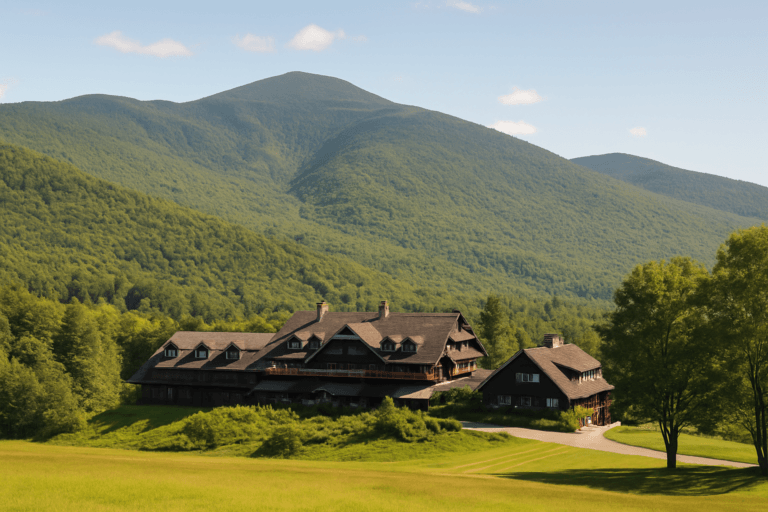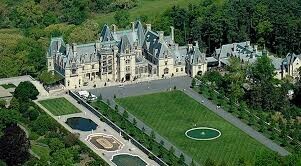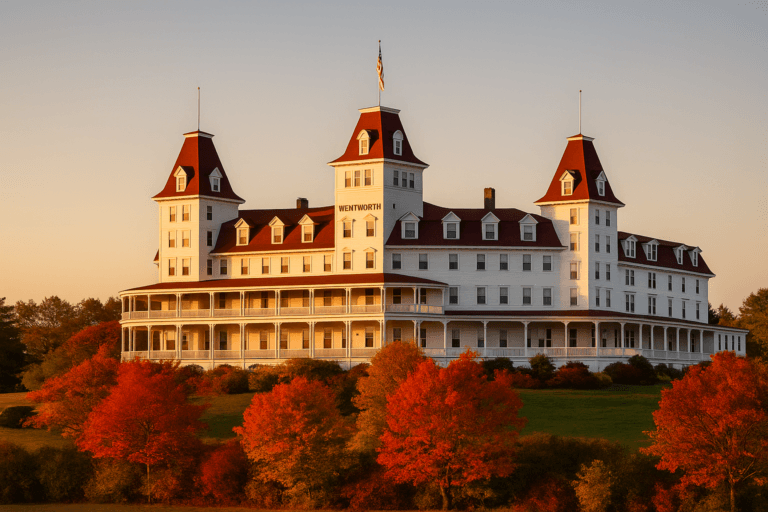Lucknow Estate: The Rise And Fall Of New Hampshire’s Castle In The Clouds
From shoe empire to mountaintop dream—how one man built a legacy above the clouds, and what remains today
There are places where the view alone is enough to silence a room—and Castle in the Clouds is one of them. Perched high above Lake Winnipesaukee, surrounded by the gentle ridgelines of the Ossipee Mountains, the house once known as Lucknow Estate is more than a pretty vantage point. It’s a testament to one man’s dream, one woman’s influence, and the thin line between fortune and failure.
Walk through its stone halls today and you’ll find handcrafted oak, stained glass, and hidden innovations from a century ago. But look closely, and you’ll also see something else—quiet traces of a life that soared too high, too fast, only to leave behind something even more enduring.
 Lucknow Estate, now known as Castle in the Clouds, offers breathtaking views and timeless architecture high above Lake Winnipesaukee in the Ossipee Mountains.
Lucknow Estate, now known as Castle in the Clouds, offers breathtaking views and timeless architecture high above Lake Winnipesaukee in the Ossipee Mountains.
A Fortune in Footwear
To understand the estate, you have to start with Thomas Gustave Plant—a French-Canadian immigrant turned millionaire, who made his fortune in the early 1900s manufacturing shoes. After selling his company in 1910 for an extraordinary sum, Plant set his sights on a very different kind of project: a mountaintop sanctuary in New Hampshire.
He wasn’t looking for grandeur in the usual sense. What Plant wanted was a place of solitude, fresh air, and self-sufficiency—and perhaps a bit of distance from the world below.
In 1913, newly married to Olive Dewey, a Wellesley-educated teacher, Tom broke ground on his dream estate. They would name it Lucknow—after a town in India they found on a map. For them, it simply sounded romantic.
Building Lucknow: Arts & Crafts Above the Clouds
The house that rose from the mountain in 1914 was unlike anything else in New England. Built in the Arts and Crafts style, Lucknow celebrated craftsmanship, natural materials, and harmony with the land.
Boston architect J. Williams Beal & Sons designed the mansion with clean lines, subtle proportions, and handcrafted elegance. Inside, Maine white oak paneling, Tiffany glasswork, and Caldwell light fixtures spoke to a philosophy of quiet luxury.
 The interior of Lucknow reflects the Arts and Crafts movement with handcrafted oak details, soft lighting, and timeless elegance.
The interior of Lucknow reflects the Arts and Crafts movement with handcrafted oak details, soft lighting, and timeless elegance.
But Lucknow wasn’t just beautiful—it was ahead of its time. The estate featured:
- A house-wide intercom system, allowing communication between rooms and staff quarters.
- A central vacuum system, still considered a luxury today.
- An early ammonia-brine refrigeration system, long before modern appliances.
- A custom “needle shower” in the master bathroom, with multiple vertical jets.
A stone stairway leads up from the gardens to the house—part path, part statement. It’s a reminder that Lucknow was meant to rise from the landscape, not dominate it.
Outside, stone terraces, a greenhouse, and a hydroelectric plant completed the vision of independence. It wasn’t just a home—it was a self-contained world.
The Dream Years
For nearly two decades, Tom and Olive lived the life they had imagined. Though they never had children, their home was filled with extended family, visiting nieces and nephews, and the quiet rhythm of mountain living.
Guests arrived by carriage, then by car, traveling the long, winding road that led to the summit. Meals came from their gardens. Electricity came from their own generators. And stories flowed like the waterfalls that still grace the estate’s lower trails.
But dreams, even grand ones, are not immune to the forces of time—or the volatility of the markets.
 Lucknow Estate, a visual reflection of the estate’s journey from dreamlike prosperity to financial hardship, echoing the rise and fall of its visionary owner.
Lucknow Estate, a visual reflection of the estate’s journey from dreamlike prosperity to financial hardship, echoing the rise and fall of its visionary owner.
Financial Collapse and Private Shadows
In the 1920s, Plant’s investments—particularly in Russian bonds and Cuban sugar—began to unravel. He mortgaged the estate, sold off tracts of land, and made desperate attempts to recover. Still, he and Olive remained at Lucknow, even as their wealth dwindled.
By the time Tom died in 1941, the estate was no longer the model of modern independence it had once been. Olive left soon after, and for a time, Lucknow faded from public view—lost to inheritance, disrepair, and obscurity.
A Second Life as Castle in the Clouds
In 1956, the estate found an unlikely new chapter. Local businessman Richard Robie purchased the property and opened it to the public as Castle in the Clouds—a name that would eventually eclipse “Lucknow” in the public imagination.
There were house tours, carriage rides, a petting zoo, and a café. Children ran across the lawns. Tourists marveled at the views. Something about the place refused to be forgotten.
Today, Castle in the Clouds is managed by the nonprofit Castle Preservation Society, which oversees the home, the trails, and the continued interpretation of its history. The estate was added to the National Register of Historic Places in 2018 and designated a National Historic Landmark in 2024.
 Today, Castle in the Clouds welcomes guests from all over the world—proof that Lucknow’s quiet elegance still captivates over a century later.
Today, Castle in the Clouds welcomes guests from all over the world—proof that Lucknow’s quiet elegance still captivates over a century later.
From Vision to Legacy
What makes Lucknow endure isn’t just the mansion or the mountain—it’s the idea behind it.
In an era obsessed with wealth and outward displays of success, Thomas and Olive Plant chose something different. Their home wasn’t about showing off. It was about building a life that felt right—one rooted in craftsmanship, connection to nature, and quiet dignity.
Today, those values feel more relevant than ever. The estate stands not just as a relic of the past, but as a reminder that elegance can be simple, and innovation doesn’t have to shout.
You won’t find gilded ballrooms or sweeping marble staircases here. What you will find is something more enduring: a place designed to be lived in, loved, and eventually, shared.
Though the estate is now open for visitors, the heart of Lucknow remains untouched—the wind, the views, and the stories linger long after the doors close for the day.
